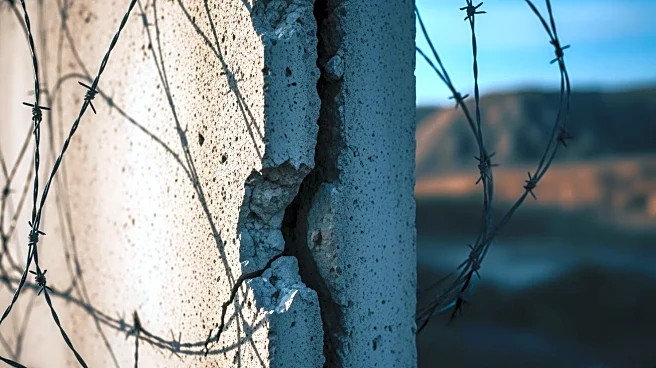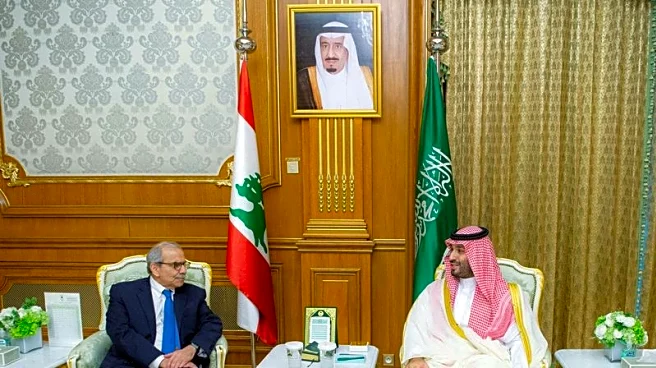What's Happening?
On November 16, 2025, Israeli Defense Forces (IDF) fired warning shots at United Nations Interim Force in Lebanon (UNIFIL) peacekeepers, mistaking them for terrorists in southern Lebanon. The incident
occurred near a position established by Israel in Lebanese territory. Heavy machine gun rounds landed approximately five meters from the peacekeepers, who were forced to take shelter. The IDF clarified that the shots were not deliberately aimed at UNIFIL soldiers and are investigating the incident. The Lebanese Army condemned the action, accusing Israel of violating Lebanon's sovereignty and creating instability. Lebanese President Joseph Aoun has instructed the Foreign Minister to file an urgent complaint with the United Nations Security Council.
Why It's Important?
This incident highlights ongoing tensions between Israel and Lebanon, particularly concerning border security and military actions. The firing on UN peacekeepers represents a serious violation of international agreements, specifically Security Council resolution 1701, which aims to maintain peace in southern Lebanon. The escalation could impact diplomatic relations and regional stability, with potential repercussions for international peacekeeping efforts. Lebanon's response, including filing a complaint with the UN, underscores the gravity of the situation and the need for international intervention to prevent further violations.
What's Next?
Lebanon's planned complaint to the UN Security Council may lead to increased diplomatic pressure on Israel to adhere to international agreements. The incident could prompt discussions on enhancing UNIFIL's mandate or presence in the region to prevent future occurrences. Additionally, the situation may influence broader geopolitical dynamics in the Middle East, affecting peace negotiations and military strategies.
Beyond the Headlines
The firing incident raises questions about the effectiveness of current peacekeeping operations and the challenges faced by UN forces in volatile regions. It also highlights the complexities of military engagement in areas with overlapping territorial claims and the potential for misidentification in conflict zones.












